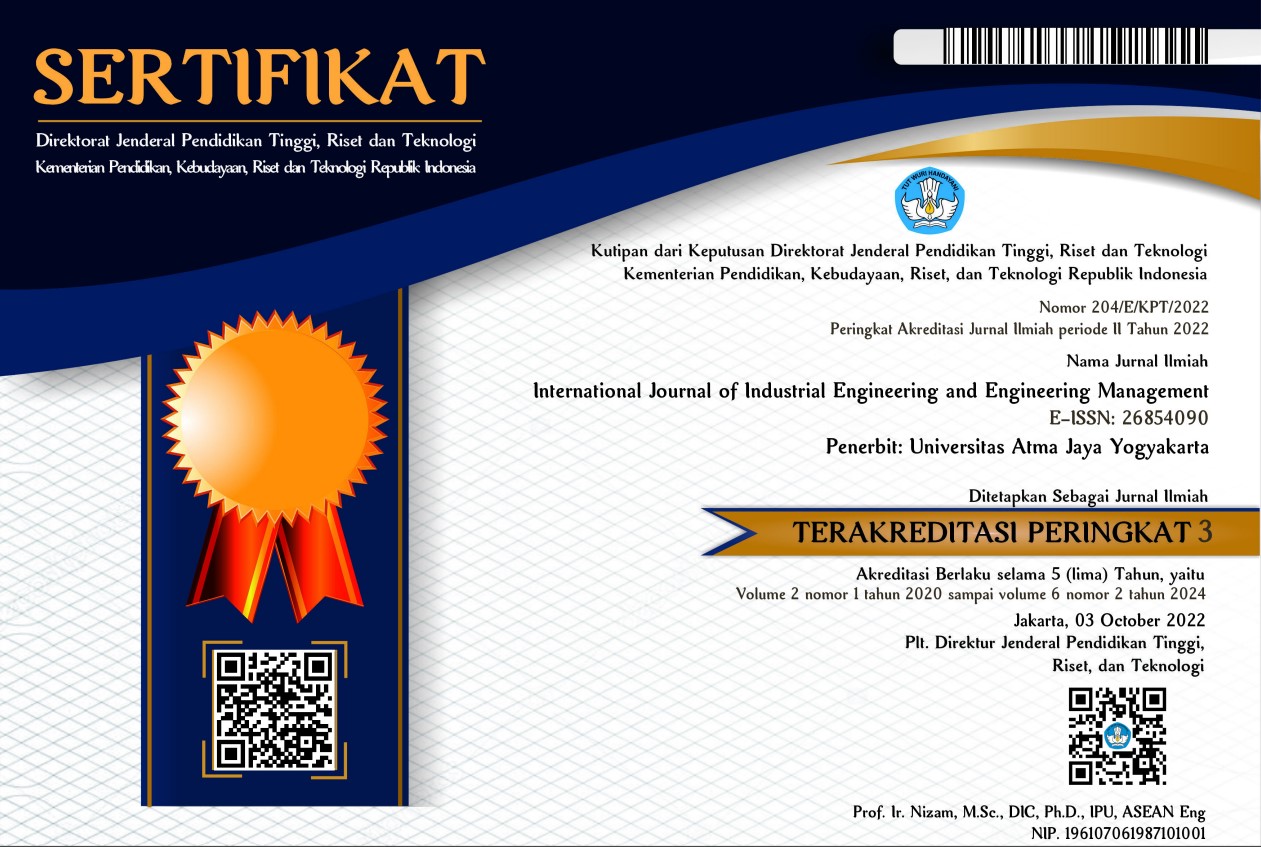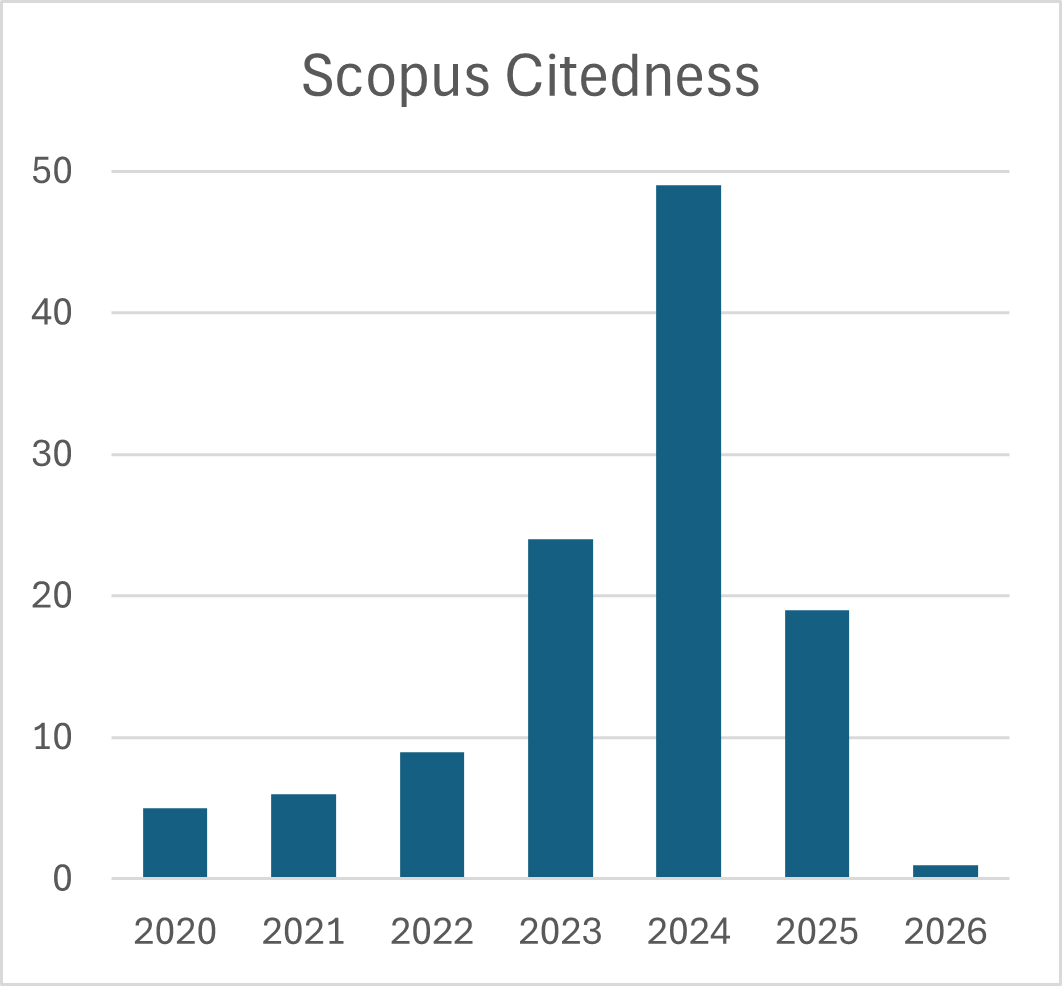The Effect of Fidgeting On Student Concentration Levels
DOI:
https://doi.org/10.24002/ijieem.v1i2.3062Keywords:
concentration, Stroop Test, spinner fidgetAbstract
Concentration is the ability needed to solve a problem. Students in learning also need concentration (DePorter et al., 2010). Unfortunately students have difficulty concentrating on doing a job. To help concentrate, students play pen, spin coins, play cellphones and other fun activities. To meet this goal, an agitated repellent device such as fidget spinner and fidget cube was made (Plafke, 2016). The benefits of spinner fidget for increasing concentration are still questionable (Schecter et al., 2017). Therefore, quantitative research is needed to prove the claim that fidget spinner can increase concentration. Unfortunately, there is currently no quantitative research that tests the effectiveness of these tools to increase short-term memory. The concentration level of a person can be measured using the Stroop test. Stroop tests utilize primitive cognitive operations, offering clues to the basic process of attention. The variable studied is Reaction Time for Correct Answer (RTCA), which is the amount of reaction time in answering correctly divided by the number of correct answers. The results of this study are the use of fidget spinner not having a significant effect on differences in the results of measurement of RTCA. The use of fidget spinner does not provide a significant difference in average error between not using fidget spinner and using fidget spinner.
References
Anderson, J. (2011). Spoiler Alert: It Hits an Iceberg. Retrieved from https://www.nytimes.com/2011/04/10/ movies/movie-spoilers-thanks-to-the-internet-are-everywhere.html (accessed 25 January 2020)
Bae, S. & Lee, T. (2011). Gender differences in consumers’ perception of online consumer reviews. Electronic Commerce Research, 11, 201–214. DOI: 10.1007/s10660-010-9072-y
Barbado, R., Araque, O., & Iglesias, C.A. (2019). A framework for fake review detection in online consumer electronics retailers. Information Processing & Management, 56(4). DOI: 10.1016/j.ipm.2019.03.002
Chen, C. (2017). Five-star or thumbs-up? The influence of rating system types on users’ perceptions of information quality, cognitive effort, enjoyment, and continuance intention. Internet Research, 27(3), 478-494. DOI: 10.1108/IntR-08-2016-0243
Chiu, Y., Chen, K, Wang, J., & Hsu, Y. (2019). The impact of online movie word-of-mouth on customer choice: A comparison of American and Chinese consumers. International Marketing Review, 36 (6), 996-1025. DOI: 10.1108/IMR-06-2018-0190
Divakaran, P. & Norskov, S. (2015). Are online communities on par with experts in the evaluation of new movies? Evidence from the Fandango community. Information Technology & People, 29(1), 120-145. DOI: 10.1108/ITP-02-2014-0042
Gemser, G., Oostrum, V.M., & Leenders, M.A.A.M. (2006). The impact of film reviews on the box office performance of art house versus mainstream motion pictures. Journal of Cultural Economics, 31(1), 43-63. DOI: 10.1007/s10824-006-9025-4
Sari, H. & Anggraeni, L. (2019). Peran tipe gambar, tagar, jumlah likes dan informasi harga pada Instagram terhadap intensi membeli. J@ti Undip: Jurnal Teknik Industri, 14(2), 71-80. DOI: 10.14710/jati.14.2.71-80
Hu, N., Liu, L., & Zhang, J. (2008). Do online reviews affect product sales? The role of reviewer characteristics and temporal effects. Information Technology and Management, 9(3), 201-214.
KPMG. (2017). The truth about online customers. 2017 Global Online Customer Report. Retrieved from https://assets.kpmg/content/dam/kpmg/xx/pdf/2017/01/the-truth-about-online-consumers.pdf
Labrecque, L.I, vor dem Esche, J., Mathwick, C., Novak T.P, & Hofacker C.F. (2013). Customer power: evolution in the digital age. Journal of Interactive Marketing, 27(4), 257–269. DOI: https://doi.org/10.1016/j.intmar.2013.09.002
Lee, S. & Choeh, J.Y. (2018). The interactive impact of online word-of-mouth and review helpfulness on box office revenue. Management Decision, 56(3), 849-866. DOI: 10.1108/MD-06-2017-0561
Lee, J., Park, D., & Han, I. (2011). The different effects of online consumer reviews on consumers’ purchase intentions depending on trust in online shopping malls: An advertising perspective. Internet Research, 21(2), 187-206. DOI: 10.1108/10662241111123766
Moon, S., Park, Y., & Kim, Y.S. (2014). The impact of text product reviews on sales. European Journal of Marketing, 48(11/12), 2176-2197. DOI: 10.1108/EJM-06-2013-0291
Murphy, R. (2019). 35 Online Review Statistics You Need in 2019. Retrieved from https://www.brightlocal.com/resources/online-reviews-statistics-2019/ (accessed 25 January 2020)
Obiedat, R. (2013). Impact of online consumer reviews on buying intention of consumers in the UK: Need for cognition as mediating role. International Journal of Advanced Corporate Learning, 6(2), 16-21. DOI: 10.3991/ijac.v6i2.2910
Pentheny, J.R. (2015). The influence of movie reviews on customers (Honors Theses and Capstones). Retrieved from https://scholars.unh.edu/honors/265
Piolatto, A. (2015). Online booking and Information: Competition and welfare consequences of review aggregators. IEB Working Paper, 11.
Purnawirawan, N.A., Dens, N., & Pelsmacker, P.D. (2014). Effects of review set balance, review source, and review content. Journal of Electronic Commerce Research, 15(3), 162-178.
Reinstein, D. & Snyder C.M. (2005). The influence of expert reviews on customer demand for experience goods: A case study of movie critics. The Journal Of Industrial Economics, 53(1), 27-51. DOI: 10.1111/j.0022-1821.2005.00244.x
Susanto, H. (2019). Tumbuh pesat, Indonesia pasar potensial bagi industri film. Retrieved from https://katadata.co.id/berita/2019/03/16/tumbuh-pesat-indonesia-pasar-potensial-bagi-industri-film
Tsao, W. (2014). Which type of online review is more persuasive? The influence of consumer reviews and critic ratings on moviegoers. Electronic Commerce Research, 14(4), 559-583. DOI: 10.1007/s10660-014-9160-5








